I am delighted to be able to introduce the speaker who begins our series tonight, Gwen Drury. She’s speaking on, “The Wisconsin Idea, “how do we define the concept that defines us?” And Gwen has a longstanding interest in higher education, and specifically the Wisconsin Idea, and is also the director of the University of Wisconsin Madison Speakers Bureau. Like all of our speakers, she’s graciously donating her time and expertise free of charge out of a commitment to public service. So please join me in welcoming Gwen Drury. [applause]
– So, I’ll start off by saying even though I coordinate the Speakers Bureau, I’m coordinating people who do speaking professionally. I don’t do speaking professionally, but I’m here with you and you’re all friends. So it’s all good. And here we go. Okay, so our intention with this course is to have a different focus each fall so we can do this for years on end because there’s so many different things that we can talk about. This year our focus is on what makes an idea a Wisconsin Idea. I’m not an expert on Wisconsin history. I have, however, spent a whole lot of time looking at the time period before World War I to try to figure out where this thing called the Wisconsin Idea came from. Why is it here? The other thing I need to tell you is that I’m off the clock. I’m not, take off my Speakers Bureau hat. This is my Gwen, the citizen, hat. I’m speaking for myself only. It’s interesting because I’ve been giving versions of talks like this to small groups for at least over 10 years. But a little over two years ago I got a job with the Speakers Bureau, and that’s part of University Relations, the official keepers of the brand the Wisconsin Idea, right? They’re the ones who connect with people and let people know what that is. It’s an important job and it’s not an easy one.
A brand communicates and helps others understand us in the current moment. But if we learn about our values only from our own branding, it seems that we can’t help but go off course eventually, right? It’d be like if you’re trying to guide your life using only your Facebook profile. Right? You need to look kind of deeper and farther every once in a while to check in with yourself. So… Raise your hand if you’ve heard this. Okay. Raise your hand if you’ve heard this. [laughter] Okay. Raise your hand if you think either of these are definitions of the Wisconsin Idea. Of course it’s a trick question, right? [laughter] So the one on the left is a soundbite that was taken from a 1905 speech because it seemed to sum things up.
Another one, in the 1930s, was actually a branding exercise based on trying to make a snappier summary of the first one. So those are things that we were trying to use sort of as a shorthand. But how much, what does it, it tells us something about the Wisconsin Idea, but how much? How much guidance do you really get from that? And it’s sort of time-based as well. How much guidance does a new faculty member or staff member get from that? What about a new student? How do you, do they really tell you what the Wisconsin Idea is? What the values are? How about people around the state? These were meant to be sort of shorthand for communicating, but I think now they just sort of leave us shorthanded. We don’t really have what we need to make our decisions. So, this is borrowed from a novel by Michael Crichton called “Timeline.” I just thought it was a cool thing. So, it’s important to know that when we invoke the term “Wisconsin Idea,” it sounds like this very general thing, but we’re actually referring to something very, very specific. And so this ties into our learning objectives for the course. We want to explore the Wisconsin Idea past and present, especially what it means to students when they are pursuing their degree.
We want to create an opportunity to talk about the future as well. So my learning objectives today are I want to sort of give a 30,000-foot overview about the early history of the Wisconsin Idea, so you can develop a more specific understanding of what it was and how it came about. Obviously I can only scratch the surface in one lecture. You want to be able to identify the various large-scale forces that combine so that the Wisconsin Idea was developed. Understand that the Wisconsin Idea was an approach, not a thing. I think we get hung up there too. We want it to be a thing. What’s the definition of the thing? Well, it’s an approach, not a thing. I want you to develop an understanding of how the Wisconsin Idea was distinct from what our peers were doing and how it was the same.
And based on these things, I’ll come to my own definition at the end of what I think the Wisconsin Idea is. I know you’re waiting with bated breath. [laughter] So, what is the Wisconsin Idea? Why did it come to exist? This is sort of the road map of what we’re going to be talking about. We’ll talk about the broader historical context before it existed, both in the United States and Europe, in the state of Wisconsin and on the campus, sort of getting smaller and smaller. How did it come to exist and what were its signature developments. And I’m going to assert that they were tools for self-governance and a self-directed economy. Truth, trust, and transparency were really the hallmarks that made these things work. So, now you have to find a partner real quick, and you have to say these words. Those two words. Say them.
– [audience talking at once] – Okay. Okay. So, when you did it, when you did it, did you notice yourself saying Wisconsin Idea or Wisconsin Idea? How about the first one? Who did the first one? Okay. How about the second one? Okay. I always used to say the first one, Wisconsin Idea, which makes it sound like it’s a thing, right? And I’m going to say to you today I think the second one is actually more accurate, because the whole reason there was a book written in 1912 called “The Wisconsin Idea” is because they were trying to explain what we had done differently in this state. So it was a differentiating thing. Differentiation is also what a brand is about, right? Right? In terms of marketing. But the Wisconsin Idea was not a branding campaign. As a matter of fact, a brand was the last thing that it was about. Here’s a branding campaign. Okay? This is about being unique to Wisconsin.
Of course, this is from New Glarus Brewery, and they, the owner of the brewery, was on a trip to England and noticed all kind of beers and things like that that were very specific to specific places, and she said, I want to go home and create a beer that’s going to be specific to Wisconsin. It’s also going to not be sold anywhere but Wisconsin. You know, if you try to buy it in Minnesota, you know what happens to you? [laughter] And so that was a brilliant branding campaign. I know many people who are very happy that this was developed and that it’s only sold in Wisconsin and that they’re in Wisconsin and they can get it. That’s a branding campaign. In the case of the Wisconsin Idea, it was the exact opposite. Its uniqueness emerged from the things that were happening here and that emerged to eventually become a brand. So, I’m going to say to you it was first a philosophy that emerged into being a culture, that then emerged into really such robust action that it had to have a name and that’s why a book was written about it. And eventually, over time, it became a brand itself.
And now it is a brand. I want to say here’s where we’re going to talk about how the Wisconsin Idea came about. I assert that the timing and the place and the people all lined up, and it really was the perfect storm. And I say the perfect storm. I first started talking about roots, right? And now she’s talking about storms. What is this? Okay, so the reason that I’m doing that is because we are going to talk about roots, but the roots developed because of the storm, and the storm I thought was kind of an interesting metaphor, because a storm lines up because of all the forces, you know? It gets stronger because of all the forces that align, right? And then it can devastate things. And this time period was anything but stable or static. So, talking about the roots make it seem like, “Oh, that’s this old-timey, everything was fine back then.” In reality, it was exactly the opposite. The roots developed in defense of the storm, of what was going around. So just, you know, storms swirl around, and I think that element of our early history is part of what sort of obscures for us the different parts of what came together to make the Wisconsin Idea.
So if you could stop that swirling, I think you might get something that looks a little bit like this. Of course, in the best of all possible worlds, it would be a Venn diagram that could overlap. In that overlap in the middle is the sweet spot. That’s what makes the Wisconsin Idea. That’s the approach. But you can’t read it if I do it that way. So my good friend and graphics aficionado set it up like this for me, which I really appreciate. So it’s really the center of that storm that combines all these different factors. So, what was unique here? In the case of the Wisconsin Idea, its uniqueness emerged from the things that were happening here and eventually caused the brand to emerge? Is it still unique? Should it be or should it not be? That’s for us all to decide. Which parts of this unique history have any relevance to the values and practices of this place today? Or of this state today? What should we keep today and what should we not? Is everything that we do in Wisconsin or maybe everything that we do in UW System or even at UW-Madison, is that all the Wisconsin Idea? How about every really, really excellent thing we do? Is that the Wisconsin Idea? We do a lot of really, really excellent things.
And when the UW System was created in the 1980s, the Wisconsin Idea was adopted as a systemwide brand. Well, there’s a reason for that, but is it clear what that reason is? And I think that, at that point, because it came across as a brand, some people didn’t even bother and realize that there was something back behind that in time. So let’s go back behind that in time. What was happening in the United States and aboard? So we’ll start there. So, 1848, what happened? – Wisconsin became a state. – Yes, we became a state. So this map actually is pretty, it’s pretty easy to read. Other versions I had of it, you really couldn’t read it. And it really didn’t matter that you couldn’t read it because the only thing you needed to know about was that dividing line between the pale gray and the dark gold. Okay? What was considered part of the US and what was considered, they say, unorganized territory.
I would say the Native Americans might have disagreed with that idea. [laughter] A state is nothing but a state of mind, right? Look at that map. It existed yesterday. It didn’t exist yesterday. It exists today, right? It’s because we say it’s a state, it’s a state. It’s not inherently a state. Right? And so what we were thinking at the time that state of mind came about is important. For instance, think about the term middle west. Okay? That’s kind of middle west. We thought we were the western frontier of the country. That was 1848.
What happened in 1849? Gold rush in California. Suddenly there’s a west west, right? But we’re the middle west. But that frontier thought pattern that the white people who were settling this place thought of is an important mindset to keep in mind. Also in 1848 there were lots of revolutions in Europe, where different groups, they were called the 1848ers, were trying to overthrow the idea of absolute monarchy. There was like a wave, like a domino thing going around. And it took in some places and not in other places and didn’t last in other places and suddenly you had a whole bunch of refugees. Okay? So these people, generally the 1848ers were educated, middle class people, who were thinking, “Hey, king, you don’t get to tell me what to do.” King said, “Yes, I do.” And suddenly they’re Americans, right? So, also in 1848, if you’re Irish, what happened? – Potato famine. – Potato famine. So we got a lot of people, especially from Germany coming from the 1848ers and we got a lot of people from Ireland because of the potato famine, here in Wisconsin. So, the Civil War breaks out, and, in 1861, as you see.
This is the two sides of the Camp Randall arch, in 1861, Wisconsin is a 13-year-old teenager of a state. Okay? Just decided to become state. “Hi, I’m a state.” Now the parent organization is tearing itself in half. Okay? The UW-Madison was called the UW at that time, and that was a 13-year-old teenager of a school, too. On the other side of the memorial you’ll see, just make note of these statues now, 1861 to 1865 on this side and it says 1912 on that side, and that’ll come into play later. But in the Civil War, right in the middle of the Civil War in 1862, the federal government passed something called the Morrill Land Grant Act. And the Land Grant Act was a response to how fast the country was expanding. The federal government said to states, if you accept this money, these land grants, they gave land in different places in the state that the federal government was holding that they had gotten in the Indian wars that they now had title to. And they said, “We’ll give it to you “and you can sell it anywhere.” It’s not like in Madison where the university is or whatever. You sell that land and then you use that money to create what is called a land grant college. And the land grant colleges were designed specifically for people to learn practical things, mining and metallurgy, engineering, the military arts, agriculture.
And those were the types of things that people needed to know in order to build this brand-new country with the advanced technology of their time, right? So that the bridges didn’t fall down and the buildings didn’t fall down and they could grow food and support themselves. So, many states established separate schools. You’ve got Michigan and Michigan State. You’ve got Texas and Texas A&M, that sort of thing. In Wisconsin, they combined the practical with the basic education at the same time in the same place. The land grant schools were often referred to as democracy colleges because many, many more people would have access to college than did in previous iterations of types of higher education. The public land grant status was necessary but not sufficient to explain the rise of the Wisconsin Idea. If we didn’t have the land grant, we wouldn’t have the Wisconsin Idea, but lots of people had the land grant and they didn’t have the Wisconsin Idea. So the land grant is a base condition, and it was very important.
But when people say, “Oh, the Wisconsin Idea, “that’s our land grant mission.” I’m going to tell you, I don’t agree with that. And by the end of this, I hope you will agree with me but we’ll see. [laughter] So I would like you to just take a moment and read this to yourself, if you don’t mind. Okay. So, the state of mind that we call Wisconsin, emerged as an official entity at a moment in history when the nation it had just joined came very close to perishing from the Earth. The young state of Wisconsin was represented at the Battle of Gettysburg by over 2100 men. Over 800 of those became casualties during this battle. Many of them had been trained at Camp Randall and left for the war on a train that rolled past the campus, through the city of Madison as it headed east to war. It’s safe to say that the fragility of democracy was a clear and present concern as the university began to grow.
What happens immediately after the war? Of course, Lincoln is assassinated. The country is very chaotic. The country is exhausted from the war. The Industrial Revolution is still creating all kinds of new machines and change. There’s a laissez-faire economy. There are really no regulations. It’s just a big slugfest. The federal government, of course, is in crisis because of the assassination, and Wisconsin is now 17 years old. One of the things that arose in the years after the Civil War is this idea of predatory wealth. So it wasn’t just extreme wealth or lots of wealth or one person has wealth or not.
It was predatory wealth, and that meant that people would amass a fortune. And this is a very common cartoon that was used to represent this predatory wealth at that time. As you see in this case, it is meant to be an octopus with a big Standard Oil hat on. So they’re talking about the Rockefellers. And you see the octopus already has all the oil derricks and all the refineries and all the tanks and everything but now is reaching out and grabbing state houses and people and reaching across the ocean and all sorts of things. So this was a very common way to think of predatory wealth. That the people got the wealth and then they shut everybody else down and shut everybody else out. So, in Wisconsin, there was a famous speech about this, and this shows up on page 23 of Bob La Follette’s autobiography. He was going to be admitted into school here in the fall, but he said, “Well, I’m kind of bored this spring, I’ll go to the “graduation ceremony and listen to the speakers.” So he did and that was Supreme Court Judge Edward Ryan.
And so here’s what Ryan had to say. “There is looming up a new and dark power. “I cannot dwell upon the signs “and shocking omens of its advent. “The accumulation of individual wealth seems to be greater than “it ever has been since the downfall of the Roman Empire. “The enterprises of the country are aggregating vast corporate “combinations of unexampled capital, boldly marching, “not for economic conquest alone but for political power. “For the first time really in our politics “money is taking the field as an organized power. “Already, here at home, one great corporation has trifled “with the sovereign power and insulted the state. “There’s grave fear that it, and its great rival, “are confederated to make partition of the stake “and share it as spoils. “The question will arise and arise in your day, “though perhaps not fully in mine, “which shall rule: wealth or man; “which shall lead: money or intellect; “who shall fill public stations: educated and patriotic free men “or the feudal serfs of corporate capital?” This speech made a huge impact on Bob La Follette.
So he even reports it verbatim in his autobiography. And he decided to become a reformer later in life and that’s in large part why. It’s just a coincidence that he heard that speech. So, at the same time it’s an era of massive change. The industrialization that’s going on allows people to network together and create things on a huge scale, things that had never been seen before. It was called the machine age, not just because there were lots of machines, but because lots of things began to operate as machines, including– I thought you were waving– …including different types of human organizations, like political parties, like corporations. This was really the rise of corporations as legal entities during this time period. Just think about this. Think about the kinds of change that’s coming at these people.
This slide, on the left, is showing wires going between lights outdoors. Okay? So for all of human history, nighttime is nighttime. Suddenly nighttime isn’t nighttime. That’s a big change. And steam can run things much more massive than ever before. But the thing that’s different about this is that before this time period you have fuel. You have individual things. Like you fuel, I’ve got my candle, I’ve got my fireplace, my wood that I have, so it’s fuel. Once it’s networked together like that, it becomes power. Right? It’s a different thing.
So here are all these changes and they’re because all these things are networked together, and what do you do? So political parties were also run like machines, and party bosses were in charge and called the shots. And corporations were legal entities that would grow to sizes never before seen. So we have this fragile democracy, this stuff is happening, all this change is happening, and this change is allowing some people to very, very rapidly get very, very wealthy. So these are summer cottages. They were literally summer cottages for the very wealthy in the gilded age. On the left, there’s like 15 of them actually on that whole thing. The one on the top is The Breakers. And there’s the entrance to The Breakers. That was owned by Cornelius Vanderbilt.
There was fear that all of this chaos and change would result in the loss of a democratic form of government. New wealth and power based on family ties was becoming conspicuous. Some of these nouveau riche were not content with wealth and sought governmental power as well. In the case of the Vanderbilts, they went old school. They literally went shopping in the old world for power, seeking out aristocratic titles and positions in England and Europe. What would brand these new/ancient ancestral ties for a new nation, what would that mean for the form of government that we have, if these things started happening? So, their wealth, the Vanderbilt’s wealth came from railroad and shipping empire. So Cornelius Vanderbilt’s brother, William, commissioned this house, also on the Cliff Walk, named Marble House. He also commissioned this. Well, isn’t that interesting? Why would you commission a crown? It wasn’t for Miss America.
[laughter] A crown is not jewelry. They were not just dressing up. This wasn’t Kim and Kanye deciding to get married in Versailles because they were wealthy and they liked luxury. That’s Consuelo Vanderbilt, his daughter. She really did have a very long neck like that. It’s not a distorted photo. Her father forced her to marry the ninth Duke of Marlborough. Forced her against her will, so that she would be the Duchess of Marlborough. And you will see, there she is.
You can recognize her from the other picture. She is a member of the richest family in America, had just forced his daughter to marry into the central hub of the English aristocracy. Here she is participating in the anointing of Queen Alexandra during the coronation of Edward VII of England in 1902. She moved from Marble House into Blenheim Palace, which is the home of the Duke of Marlborough and the top tier of the British aristocracy. The same industrialization was depleting the fortunes of the aristocracy. So they needed cash. They needed it bad. And this place room for lots of heiresses. Here’s another one, Jennie Jerome, who became Lady Randolph Churchill and lived in this same place.
This happened so much, these were called dollar princesses. It was called cash for titles. And that’s her son, so we’re not making this up. [laughter] So what was happening in Wisconsin during this time period? The fear that the people accumulating vast fortunes would try to turn their wealth into governing power was also happening in Wisconsin. After the Civil War, lumber barons were capitalizing on the growing US need for building products. This is Philetus Sawyer, who was literally a sawyer. He sawed wood. But this was our version of predatory capitalism, and there were lots of different things. But the idea of extracting the value from a piece of land, and then it was so cheap to buy you don’t even need to sell it.
Just move on and buy another one and extract the value. So there were some people who made big piles of money, gradually getting themselves, deciding to themselves elected to public office and then make sure that the laws got changed to support the things that they were doing to allow them to personally benefit more. This became sort of a crisis in Wisconsin in that in 1867 the legislature sent Increase Lapham, as you see on that report, that’s an actual facsimile of the report, who was the first scientist in Wisconsin, and two other guys made a commission and sent them up to look at this area that was called the cutover, which was in sort of central south Wisconsin. It was a band. It was called the northern pinery that extended from Michigan, across Wisconsin, up into Minnesota. And it was tons of pine. What did the nation need right then? Tons of pine. We had it. However, all these people were clearcutting the pine. Just completely clear, going in and just decimating the place. And that’s why the legislature was hearing about this, and they sent them up there.
And in this report they said they think that this could turn into Palestine, like Palestine was rumored to have trees and everything and then turned into a desert. They were afraid that Wisconsin, parts of Wisconsin, were going to turn into a desert. And here’s why. After– So there are some people trying to farm that, with all those stumps that were left over. People tried, the land was cheap, why not try? They often failed. A lot of this was built on sand and you needed to know how to grow things on sand. Not build them but grow on sand. Obviously hard to remove all those stumps, unless you have the other kinds of equipment. And so if you’re the average person, you may not have that yet.
The cutover created erosion and washouts. So it’s not only that particular land that’s a problem, but it’s other land that’s affected as well. It caused problems for extensive numbers of people. The logs– Okay, you don’t have logging roads, etc. You just log and you dump the logs into the river to float them down to your sawmill. Right? Well, if you want to go fishing, what do you do? Maybe you want to cross the river. What do you do? So, who owns this river? That’s a question. And you can look on the website. I have an interesting little one-page article about an issue that came up having to do with this. It’s under “Whose Property Rights,” it’s called.
They also created lots of danger and destruction when the logs jammed like that. The power of the river did not stop, right? So this is just power building up and building up and building up. Then it would explode or they had to dynamite it. And then it would send logs with that power down, wrecking other things on the way and end up in Lake Superior. I mean, just all kinds of unintended consequences that were consequential. The logging companies benefited, the people who made the furniture, etc. So there were benefits to this. But there were lots of detriments as well that were not part of their equation. Now, this shocked me.
This is the cover of a book written in 2006 about Wisconsin politics and government. And I went and heard the guy, the author, give a talk about this. And he said that Wisconsin was considered one of the most corrupt states in the Union. And I was like, “Wow, I did not consider Wisconsin a corrupt state.” Apparently when the Constitution was written, it was written as a very forward-looking document, but all that chaos that happened after the Civil War drug us down into being considered one of the worst, if not the most corrupt state. Complete with a really well-oiled machine party government system. What about agriculture in the state after the Civil War? Up until now the saying, “Wheat is king.” Now we say, “America’s Dairyland,” right? We didn’t. It was “wheat is king.” That is what we did. Farmers who didn’t necessarily know a lot about farming could come and they could grow wheat. It was pretty easy to do.
But what they didn’t also know was that wheat depletes the soil of nitrogen. If you keep growing wheat in the same place it’s not only depleting the soil but you’re also, you’re running into your resiliency problems. The normal things, that a crop would bounce back from, are not going to bounce back from. And so the farmers began to demand– So the wheat crop began declining. Okay? We were shipping it out to Europe. And we thought things were great. And then it began declining. And then pretty soon it could resist the boll weevils. Not the boll weevils, the chinch bugs. Yep. And the rust blight. So the farmers were in a really tough position, and they began demanding help from the UW. Right? Because, remember, we were an ag school.
And so we began to work with the farmers, we developed short courses, so in the wintertime they could come and learn new things like crop rotation and things like that. Ag research stations were established. Research about showing that vertical silos, vertical silos were developed in Wisconsin. They came from the university. So when you think of farms and you think of vertical silos, it’s because grain spoiled less if you stored it vertically because of how the weight kept it packed down in the silos and kept the oxygen out. We’d began collaborating with William Dempster Hoard, who later started the magazine Hoard’s Dairyman. So, railroads had also been opening up new land farther west and connecting them with eastern markets so there was less pay for whatever wheat you could develop. There was a fledgling dairy industry. I don’t think that’s really a justifiable picture of the fledgling dairy industry, but I thought it was kind of old-timey and I used it. But that fledgling dairy industry, though a lot of the immigrants did have some experience in their home countries with cheesemaking, etc., was not doing well.
One of the reasons was, the corruption in Wisconsin at that time. Milk was sold by weight. Right? So if you’re going to make– Okay think about, this is before refrigeration, right? So milk itself is a hyper local crop. You have your cow in your yard, you milk it, you serve the milk, you make some butter maybe, and then you do it again tomorrow. Or maybe you share it with your neighbors or you might sell it very, very locally. If you want to have an economy based on dairy, you need to use what? Cheese. Refrigeration is going to come later. Cheese already, cheese could be sold. Cheese could be transported. Cheese could hold its value. However, in order to make good cheese, you need to have good milk.
And if you’re going to have corruption and people bringing milk to a creamery and saying, “Oh, well, before I bring it in. “I’m going to skim the butterfat off or maybe I’ll add some water “or whatever to try to work the system and get some more money.” You’re going to always have your cheese batches sketchy. They’re going to fail. Actually, Wisconsin was known as a place whose cheese you should avoid. [laughter] Yeah. Do you– Just, it’s amazing. So it was corruption that was making that not work. Some cheesemaking communities were able to make it work because, obviously, they were able to prevent corruption like that. So corruption can be seen as a public bad rather than a public good because it keeps individuals from being able– The honest farmers were not able to make a living this way either.
You could only count on who you know. So, what changed in Wisconsin? We went from being considered one of the most corrupt states in the US, to being considered one of the most honest and well-run. How did that happen? Well, I’m here to tell you. This is where the University of Wisconsin comes in. It really is. This is going to be a super boiled-down version of a very epic story, so forgive the fact that I’m concentrating on certain individuals. There’s just no other way in a one-lecture thing. So first off, I’m going to start in 1874 when John Bascom arrived as the brand-new president of the UW. He had been educated at eastern schools just like most other university presidents.
The university was run just like most other colleges, sectarian schools, etc. The president was in charge of the moral education of the students. Bascom was trained in divinity, and he taught political economy and rhetoric, but his main thing was he was in charge of the moral education of the students. He came from New York. He had gone to Williams College and a couple seminaries as well. Because of where he came from and his family ties there, he had been an abolitionist. He also was a feminist and a prohibitionist, and he had been a Chautauqua speaker. So the Chautauqua was sort of like a revival movement that was going on around the country where they had Chautauqua tents out and people would come for programs and things like that. But when he came to be the president to a public school, he had to wrap his mind around that.
He also was a philosopher. And he said, you know what? You have a moral obligation to help the people of the state who made your education possible. Well, why was that? Because he believed, as I said, he had studied divinity, he believed that, in terms of being a Christian, he believed in a strain of Christianity called the social gospel. And the social gospel said, “Okay, the previous forms of “Christianity were about personal– going to heaven.” So you had a list of all the things you should do and all the list of all the things you shouldn’t do and as long as you were right with both lists, you were good. However, he’s saying, “Well, what would Jesus do?” That’s part of the social gospel approach. Saying Jesus knew he was going to heaven. But as he walked through the world, he made sure to put people back on their feet as he could. Okay, so that’s the approach of the social gospel, and that’s the approach that this guy brought to this school. So that’s the philosophy part.
As a matter of fact, he said this so much that 30 years later when his student, Charles Van Hise, was inaugurated as the UW president, he said that John Bascom pounded this into his students with sledgehammer blows. But he was a real moral hero to the students, so I’m sure that was tongue in cheek. But he was very adamant about the fact that you have a moral obligation to help the people around you of the state who made your education possible. That exact same year two people arrived as freshmen at UW. Of course these are their graduation pictures. They didn’t take freshmen pictures. Bob La Follette and Charles Van Hise. La Follette, during this time he won an interstate oratory contest as an undergrad and eventually became a renowned orator. Van Hise studied mining and metallurgy and worked with Professor Roland Irving on the US Geological Survey of Wisconsin.
And freshwoman, Belle Case, who eventually became Belle Case La Follette, though four years younger than her future husband, Bob, Belle Case was in this same class. She graduated near the top of her class, and Bob almost didn’t graduate. [laughter] After they married, she would go to law school, and she would become the first female to graduate from the UW Law School. Okay, so now we’re going back. Remember this report from the cutover? Okay, the reason it’s important is not only that it was important, but that Increase Lapham worked on it. He also worked with Roland Irving, who was the major professor of Charles Van Hise. You see this connection? Young Van Hise did work for the US Geological Survey too, as he was an undergrad. He did it just as a student job. So observed wide swaths of the state himself with all of the problems that were going on. And really literally studied the lay of the land of Wisconsin.
I mean, he was studying the rocks and the minerals here. Van Hise, okay that’s the Van Hise Rock, dedicated to him. Can you see how one side of it is dark gray and the other side is more pink. Two different kinds of rocks that formed together. That was dedicated to him. It’s called the Van Hise Rock. But what he was studying was the morphology of rock. He wanted to know how was rock created? Where did it come from? Why did it change? How did this happen? So he was learning to think in geological time. Really, really long, extended time frames, you know, to determine how this happened.
One of the things that he determined is that phosphate deposits, if you want phosphate to use to grow your crops, phosphate deposits come from millennia of bird droppings. Right? So he’s thinking long-term. And that got me to thinking, passenger pigeons, okay? So, passenger pigeons, I’ve never seen anything that, I’ve never seen that he commented on this, but I will say to you that during the time from the time he was– Okay, 1871, the largest nesting of passenger pigeons ever recorded, not that ever happened, but ever recorded, happened in Wisconsin in 1871. Okay? Van Hise became connected with the university in 1874. By the time Van Hise is no longer connected to the university because he suddenly died in office as the president. So not even his whole lifetime, just the time he was connected to the university, we went from having millions of passenger pigeons, so many that they would darken the skies for four days straight as they were flying over in these flocks, to none. Zero. None. During his lifetime. So he’s thinking in these long-term geological times and watching something disappear right before his eyes. The trains and the telegraph helped get rid of the passenger pigeons, because you could telegraph to other people.
Oh, this is where they’re going. They’re headed west. And the trains could ship the carcasses out east and you had a market for them. So, and also squab. Squab. Who knows what that is? – [murmuring] – Baby pigeon. Well, if you’re super wealthy and you’ve got nothing else to spend your money on, squab is like a real delicacy. So now we’re raiding the nests. We’re not just killing the adults, we’re raiding the nests. So it was just a matter of time, really.
The very last passenger pigeon had been born in captivity, hatched, not born, hatched in Wisconsin, but died in 1914 in an Ohio zoo. So that’s just, that had to have an effect on him. And I will tell you also that Charles Van Hise wrote or published the first textbook ever written on conservation. Okay? He was also fond of the phrase “the greatest good “for the greatest number for the longest time.” That’s how he defined conservation. So about 30 years after they met, these two end up leading a very new distinctly Wisconsin-based era. La Follette went into law after UW, then he ran for Dane County DA, then state representative, then governor. He held some of those positions and sometimes he lost. He was the first Wisconsin-born governor of the state and the first UW graduate to be governor. He was a Republican, and the Republican Party began in Wisconsin. Van Hise went on to become the first person to earn a PhD at Wisconsin.
Later he was the first Wisconsin -educated UW president. Both were first-generation college students from farming families. So I told you before, La Follette wanted to be a reformer. Why would he turn for help to the UW? Of course, not only did he have relationships and fond memories of Bascom, but, really, UW had begun to put itself on the map in a different way, long before that. So I’m going to talk about, as early as the 1850s, the issue of truth was really central on the campus. Traditions had been forming, and one formed that was a little different than it did at other places. Lots of schools in Europe and here and public, private, whatever, had debating societies. It was a very popular thing to do. At Wisconsin, they did the inter, you know, inter, intra, in your own society practicing and then, you know, inter-schools and inter-state and all sorts of things.
But the one that got really caught on here at Wisconsin was called joint debate, and what that was was the top two debating societies on the campus would fight. They’d have a battle with each other once a year. And what they would do is the students would watch the new students coming in, and they’d watch and see who’s the smartest one and they’d try to get them on their team, right? Join us, join us. Then when they got them in, they would groom them for four years, and they would, you know, drill them and practice, and it was a big honor to be in a debating society. And by the time you were a senior, they had secret ballots within the societies as to who was going to be the top debaters. They picked their top three debaters. So think of the honor that would be. You know? This was very compelling for the students. The main thing that I want to tell you about this is that they picked a topic, okay? One group got to pick the topic, and they always picked really sort of cutting-edge, undecided, hot-button topics. The other group got to pick whether they were going to go pro or con.
Okay, so there was a lot of tension there. Once they knew what the topic was going to be, they were let loose, and the groups, all of the people in their organizations, got to work. They would put us on the map because they would start writing to everyone they could think of in the nation and people overseas, anybody they could think of who might have some information on this because they needed to know all the pros and all the cons in order to beat the other side, right? So, in 1894, one of the groups spent over $100 in postage alone, in 1894 dollars, trying to get information of all kinds from everywhere. In 1895, the Cardinal newspaper state that almost 5,000 letters had been received back by the members of the teams that year. So these students got literally trunkloads of information, and then they began synthesizing it as a group to prepare their arguments so that they would give it to their debaters to go and present it. So they learned a lot. They learned a lot. They didn’t get to just choose which side and debate what they thought and defend their opinion. They had to really go through a lot to do this.
The faculty, this was not faculty-driven, the faculty would say to the students, you guys, you need to put a moratorium on how much time you spend on this. You need to be doing your classwork, not all this stuff. And the students said, nope. And they would stay during the summer. They would stay all hours. And then they– At the end of the– When the actual night for the debate came, you could actually say that the students for the University of Wisconsin were the most well-informed people on the planet, you know, having to do with that topic, with the freshest information right now. Then they would take that information and they’d bind it into books and they’d put it in their library. Okay? So joint debate is also why debating societies hung around here a lot longer because, you know, they kind of faded away at other places, but we had this very, very strong thing going on here. So another thing that put us on the map was when Thomas Chamberlin made this statement in 1890. He went and gave a speech in Nebraska, and he said, “Scholarship for the sake of scholars is refined selfishness.
“Scholarship for the sake of the state and the people “is refined patriotism.” Well, he’s also the person who started, who brought the research idea into the university. Before this it was really mainly focused on teaching, and this German influence of focusing on research and developing new knowledge was starting to come in. And he was the president who brought this in. Johns Hopkins was the first university established specifically for research. So he ushered in this change. 1890, the same year– He said this was the year something very important happened that made his words seem even more important. And that was, remember that dairy problem that we had? The issue of no trust and no way to make really good cheese? Well, in 1887, the Hatch Act had passed, and that established ag research stations. One of the things that was assigned to a researcher here on campus was the idea that, “You know what, if we could develop a test.” There were tests for butterfat content in milk but they were really expensive and really complicated and difficult and you’d have to go to a central place. He was assigned to develop a test that was going to be so easy that anybody could do it.
Kids could do it in schools. They could go home and teach it to their parents. Everybody could have this tool in their hands, and they could test any milk that was brought for sale or whatever you want to do, why ever you want to test it. You could test it and see what the butterfat content was. So you could say, is this going to make good cheese or is it not? So, that actually changed the dairy industry overnight. Literally overnight. That, in 1894, is an ad. The Babcock butterfat test. They call it Babcocking in Vermont.
That was an ad from Vermont. This changed the dairy industry around the world because you could suddenly test cheese. So a basis of trust was established in the industry that allowed Wisconsin to seriously compete in cheese production. In 1894, the issue of truth comes up again. We had hired Richard Ely, who was an economist. We hired him away from Johns Hopkins. He had been also, so he’s famous as a professor there, but he also became famous because he was part of the Chautauqua circuit, which, again, goes to that social gospel idea that you make the world better. So he was sort of a religiously based economist himself. So he came here in 1892.
In 1894, he was accused of teaching socialism in his classes. And he wasn’t accused to his face, he wasn’t accused to his boss or the regents. One of the ex officio regents actually made an op-ed letter and sent it to a magazine called “The Nation” and said, “Richard T Ely is teaching socialism “at the University of Wisconsin.” And so then what do you do? Because there had been a lot of violence in Europe and things having to do with socialism. So that was like, what is happening? Well, he had written a book called “The Pros and Cons “of Socialism as an Economic System.” True. He had apparently not been teaching this in his classes. So, the regents didn’t know exactly what to do. How do you handle this? It’s in a big, national magazine. You need to do something. What do you do? So they held a trial.
Well, now we’re on the map again. Wisconsin’s holding a trial for economic and academic heresy. Well, the trial was meant to be very transparent so that people could attend. You would have due process. You’d go through it. I mean, it wasn’t like a criminal trial, but they held it in the law school. By the second day, the case was essentially falling apart. The person who made the accusations didn’t even show up by the second day. So now we have this big public thing and what do you do? So the regents, in order to get some closure, crafted a statement. And that statement, eventually the short part of that much longer statement ended up being the motto of this university.
And this plaque still is on Bascom Hall. It has lots of other stories that go with it. But what it says is, “Whatever may be the limitations which “trammel inquiry elsewhere, we believe that the great state “University of Wisconsin should ever encourage that continual “and fearless sifting and winnowing “by which alone the truth may be found.” So, why would Wisconsin value academic freedom? Remember, scholarship for the sake for the scholar is, okay, let’s just substitute academic freedom. Academic freedom for the sake of the scholar is refined selfishness. Academic freedom for the sake of the state and the people is refined patriotism. Okay? So now we’re going to jump right up to 1904. This is when Charles Van Hise was sworn in as president. It was also the 50-year jubilee of the first graduation here. So they just made a great, big party. It was huge.
This picture is the front and the back of a little commemorative medal that’s about this big that was struck for the occasion and you could buy those, and they have a few of them in the archives. But it says, “Celebrating 50 years of service “to the commonwealth,” on the side there. So the idea of service, they had already been giving service to the commonwealth, but this is the moment in which service to the commonwealth went into turbo overdrive. Okay? So they’re saying, yeah, we did this but it was nothing like what came after that. This is also the same time, that there’s the rise of the university movement, meaning a lot more research being incorporated. And service was really a buzz word at a lot of universities. But in a lot of those places service was a little bit more like noblesse oblige, you know? I’m up here, you’re down there, I help you because I’m better. I think, from the things that I’ve read about Wisconsin, it was less like an uplift here and more like us lift. I mean, these people were from farming families right here, you know? All of us were in it together. And so it was sort of a different approach.
Another thing that put us on the map was the issue of transparency. So, this is Charles McCarthy, I should say, and that is the Legislative Reference Library and his staff. And previous to them existing, if somebody wanted to introduce legislation, they could just write something on a scrap of paper and run it up to the front, and then they’d say, “Okay, all who say yay or nay.” I mean, they could take a vote on that, you know, just literally like a napkin. When Charles McCarthy came in, he had been a history major and gotten a PhD at the university and he needed a job. And they said, well, we have this clerk job because we’re moving all the books from the Capitol down to this new library, now known as the Historical Society, and we want to start something new up there. And he said, well, we’re starting a library of legislation and legislation is new and future-looking, why would we have books there when books are already old by the time they’re published? We want something really new. So he started something, the first ever of its kind, he essentially started a human search engine. Okay? What did they do? Okay, so let’s say you, what’s your name? – My name? – Yeah. – Allie. – Allie is a legislator.
Allie knows she wants to come in and she wants to propose legislation on fencing. Okay? Like fences, not fencing. [laughter] Or whatever. Whatever you want, Allie. [laughter] So she tells Charles McCarthy, I want to propose things about fences. And so he gets his team to work. What do they do? They telegraph every other state and get their legislation about fencing. They cut things out of books. They cut things out of magazines. Where are you hearing this? You’ve heard this before. The debating societies. Are you surprised that Charles McCarthy had served as a judge for the debates? [laughter] Okay? So, this was so successful at doing your homework, so when Allie comes for the legislative session, she sits down at her desk and what’s there? A bound copy of all this stuff they’ve collected for you. So it’s not the back of a napkin anymore, right? Your homework has been done.
Now you just need to decide what you want to say. You can look at all these things that all these other people have done. So, basing laws on facts, making it clear where your information comes from, make sure your laws are clearly written. They also started a bill drafting thing where they would help you write it so you didn’t have to go hire a lawyer to help you draft a bill. And so his task was to bring knowledge resources into the legislative arena. This service made it possible to pass over a thousand laws in the 1911 legislative session, all of which were well-written enough to pass constitutional scrutiny. Okay, so they didn’t get footballed back and forth and back and forth, because they all were solidly written. The book “The Wisconsin Idea,” where that name comes from, was written in 1912 to respond for the massive request for information that the legislative reference library got when the news got out that they had passed all these reforms. People all over the nation wanted to know, how did you do it? And so this was the first such service in the nation.
In 1914, Bob La Follette, by then, is off in the senate, the US Senate. He introduces this to the US Senate and says the federal government needs something like this. And it was adapted and it’s now called the Congressional Research Service. It was adopted all around the world. Many different states have adopted it. And let’s just remember, it came from the students at the University of Wisconsin. Not the faculty. We love the faculty but it wasn’t them. [laughter] So, Charles McCarthy was really dedicated to expanding resources to all Wisconsinites.
He has a long backstory of his own. But this is a chart of ideas that he had of ways to get knowledge resources of all different kinds out to anybody and everybody that he could. And so he was always proposing new ideas to people and different things. He actually personally funded a study of correspondence schools out of his own pocket. 600 bucks he paid to do a study of correspondence schools in 1906. And then that ended up convincing Charles Van Hise to create what we now know as modern University Extension. Okay, not Ag Extension, but University Extension. Of course, the UW Colleges came out of that. He also personally went to Germany to learn about continuation schools for people who had stopped out of high school.
How do you get them back into the system? And in Germany they were doing something, and he came back and started the technical college system here. So he helped found the Wisconsin Union as an organization. He even saved the football program from a corruption scandal at one point. He was a football coach too. So, when he wanted to start UW-Extension, he said we want to do for the boys in factories what we’re already doing for the boys on farms. Okay? So it was sort of a built-in tension there between those two things at the same time. The Wisconsin Idea was about ensuring, through education and knowledge resources, that the people of Wisconsin had the tools to keep the economy and governance of the state of Wisconsin in their own hands. McCarthy taught in the political science department as well. So, this is me paraphrasing what I think they believed, that if knowledge is a power in democracy, it should belong to the people. How do you get it to them? Well, McCarthy began consulting with faculty about the drafting of bills to make sure that they were really solid.
La Follette started appointing faculty at that time to different commissions and things where they needed a lot of expertise quickly. This was easier to do in Wisconsin than in other places since the Capitol and the university are very close to each other. You just walk down State Street. And so, here, I told you that he wrote that book because people were asking him, you know, how did you do this? So this is chapter one of the book “The Wisconsin Idea,” and the chapter is titled “The Reason For It.” So, on page eight, here’s this chart. I don’t know if you can see it. Stage one, he’s saying income inequality is going to get out of hand and it’s going to cause us problems. So he’s saying stage one, back in 1850, most of the American people, this agrarian economy was kind of, everybody was in the middle. You had some wealthy people, some poor people, but most people were in the middle. Stage two was 1912 when the book was written.
And he said, well, you know what? We’re starting to get this stratification happening. We still have a pretty big middle class, but it’s starting to separate out. And he said, if we don’t do something, a hundred years from now, which would have been 2012, we’re going to have stage three. We’re going to have lots of poverty and a little bit of wealth, most of the wealth in just a few people’s hands. That was the reason, in his mind, for the Wisconsin Idea, for this approach of bringing knowledge to bear on the problems of the state. So the Wisconsin Idea, that we’re talking about roots, was really about the future. Okay? And the greatest good for the greatest number for the longest time. So that’s why I said that there’s this sweet spot. So all these different things came together that created this Wisconsin Idea. And I’m really going fast now.
So, at this point, by 1908, we really have a changing national reputation. This is Charles Eliot, the president of Harvard, and he made an official declaration that the UW was the leading state university in 1908. Okay? In 1909, you’ll see that, that’s a cartoon from Puck magazine, which was like a satire political magazine of the time, and it shows La Follette as Noah. All right? Now, that’s important to know. There’s La Follette as Noah. These guys over here with him were called the insurgents. They were other reform-minded senators. So they’re working on building the ark, and if you could see that, if you can, it says principle. So it’s the ark of principle that they are building. And you’ll see all the people who are laughing at the Noah story. They’re laughing at Noah, and they all have the names of different trusts and monopolies on their backs.
[laughter] Well, La Follette liked this pretty much. He liked it so much that he actually republished that in his new magazine that he started the same year, which was called La Follette’s Weekly magazine. This was the first cover of the first issue. And you’ll see it says “the truth.” And the masthead, the motto was “ye shall know the truth and the truth shall make you free.” But one of the things you really want to look at is in that circle. Lincoln Steffens was a very famous muckraking journalist. Okay, so the muckrakers were the people who were trying to go out and expose a lot of the things, the abuses that these big corporations, as they were growing, were starting to do. And Lincoln Steffens was with that group, but he kind of specialized in debunking politicians. So he heard about this La Follette guy, and he’s like, “Yeah, yeah, I’m sure he’s a Charlatan, “I’m going to go debunk him.” So he starts looking into it, he starts interviewing people, and he starts hearing that, “No, he actually did the stuff he said he’s going to do. “No, it really was.” And so Lincoln Steffens turned around from wanting to go after him to being one of his biggest fans.
So on his first magazine cover, there’s Lincoln Steffens with the future article. Remember this? Predatory capital? Okay, so this shows predatory capital was tamed in Wisconsin. Before, we got the railroads squashing the little girl. After, she looks very happy and pressed and everything. It says, “model state and good laws.” And whose hand do we see? That’s Bob La Follette. [laughter] At this point, Bob La Follette– This appeared in a Chicago newspaper because Bob La Follette is running for president by this point. He’s running in the primary, or he’s actually running for president. So this says, so he was famous as an orator, right? So there he is as an old-timey orator, you know, on a stage with his water. But his mouth is closed.
He’s not saying anything. Right? He’s just smiling. And he’s saying, “exhibit A.” And on the top is says, “Mr. La Follette’s strongest card.” In other words, his reforms speak for themselves, he doesn’t have to be an orator to speak for them. One thing, though, to know is that around the same time this photo came out and it was, on there it says, “Mrs. Robert M La Follette, “she has been my wisest and best counselor.” So he shared the credit. So, we’re ending up here. 1911 legislative session. Not only did the book “The Wisconsin Idea” emerge because of that session, but the money for the Camp Randall arch was enumerated in that session, and it was dedicated the same year that the book came out. So those two things are tied together. So, in 1961, Wisconsin was a young, fragile democracy. By 1912, it was a mature and famous democracy.
And by 1913, I really liked this. This book came out in 1913. It was written about a conference that happened in 1911. But this quote says, “Most universities have regarded “themselves and been regarded somewhat as sacred shrines “wherein is kept ever burning the lamp of knowledge “and whereto devotees of abstract truth come to worship. “The University of Wisconsin has led the way to the new “conception that the function of the university is to serve “rather as a central powerhouse whose great dynamos produce “driving force and light not only for self-illumination “but for service of light and power to all the state.” So, again, we’re going from that idea of individual fuel, separate, to this idea that, if networked together, we produce light and power. And we don’t tell you what to do with it, but we’re here producing it. You can use it. You can see it. You can have your book of stuff on your legislative desk.
Knowledge, knowledge was not to be hoarded for personal gain but to benefit everyone. Knowledge was important for the public good. So I think it’s problematic if we lose sight of the fact that it was the way that Wisconsin proceeded, if we start thinking of it as the thing, it was the way. And so I think the center of the storm, all those different layers of things are what produced that way. And I want to caution us not to conflate those things. If we pull them apart like that, then we can say, “Oh, if we’re talking about the land grant.” We don’t just say, “Oh, the Wisconsin Idea “is our land grant mission because it’s only part of it.” And, finally, I know you’ve been waiting, I’m going to offer my definition of the Wisconsin Idea. I think it was a distinctive approach developed in Wisconsin to use knowledge resources of all kinds to keep the governance and the economy in the hands of the greatest number of people and not just the small number who could corner a market. Thank you. [applause]
Search University Place Episodes
Related Stories from PBS Wisconsin's Blog

Donate to sign up. Activate and sign in to Passport. It's that easy to help PBS Wisconsin serve your community through media that educates, inspires, and entertains.
Make your membership gift today
Only for new users: Activate Passport using your code or email address
Already a member?
Look up my account
Need some help? Go to FAQ or visit PBS Passport Help
Need help accessing PBS Wisconsin anywhere?

Online Access | Platform & Device Access | Cable or Satellite Access | Over-The-Air Access
Visit Access Guide
Need help accessing PBS Wisconsin anywhere?

Visit Our
Live TV Access Guide
Online AccessPlatform & Device Access
Cable or Satellite Access
Over-The-Air Access
Visit Access Guide
 Passport
Passport
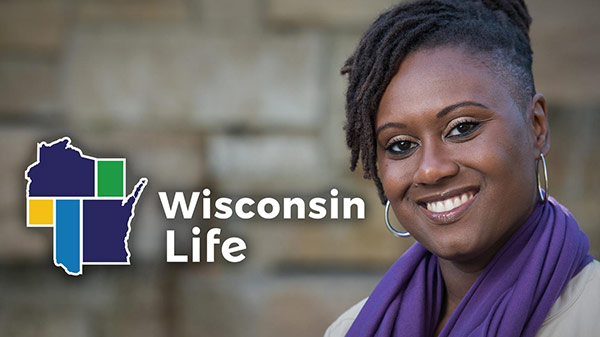

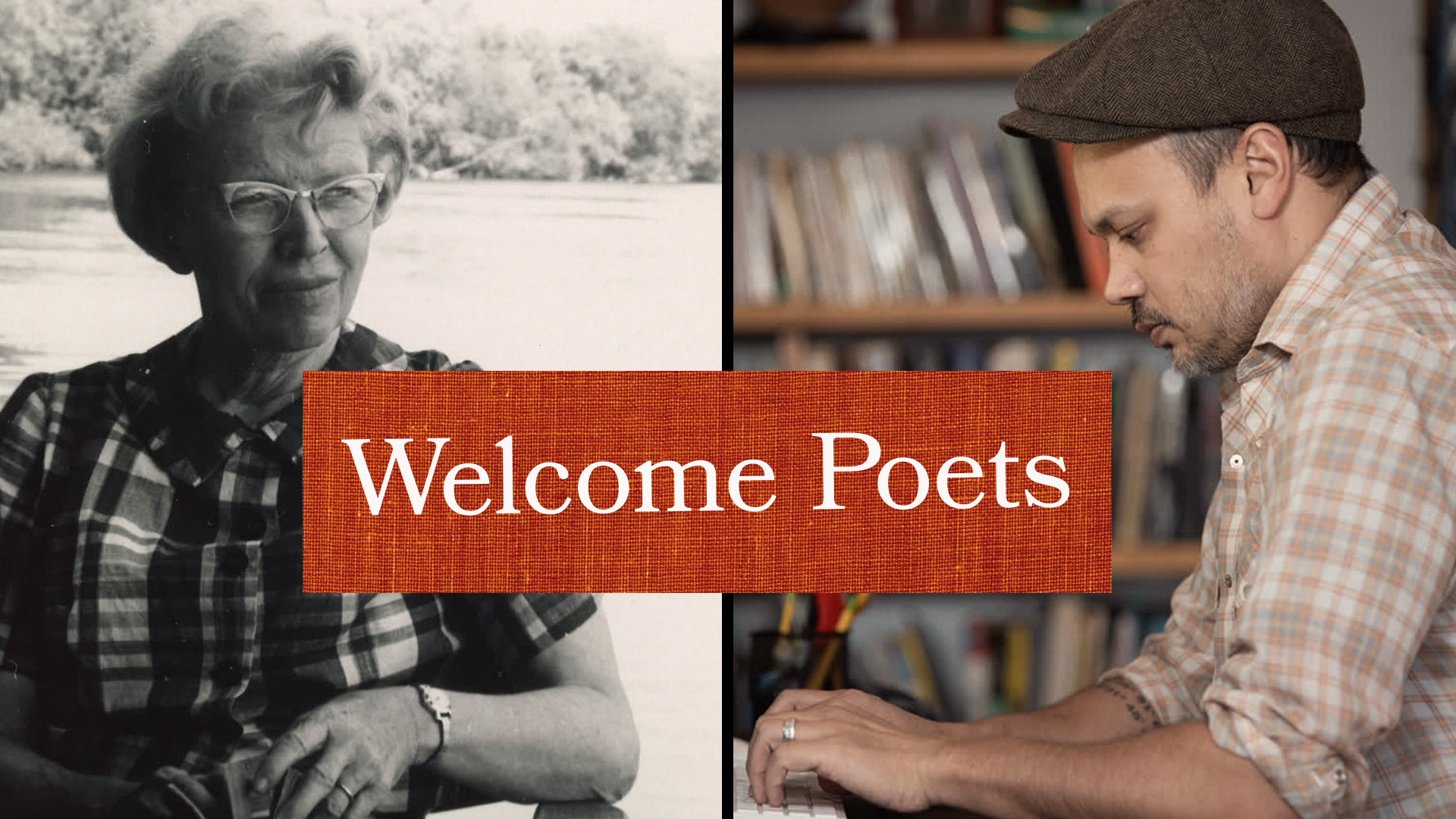
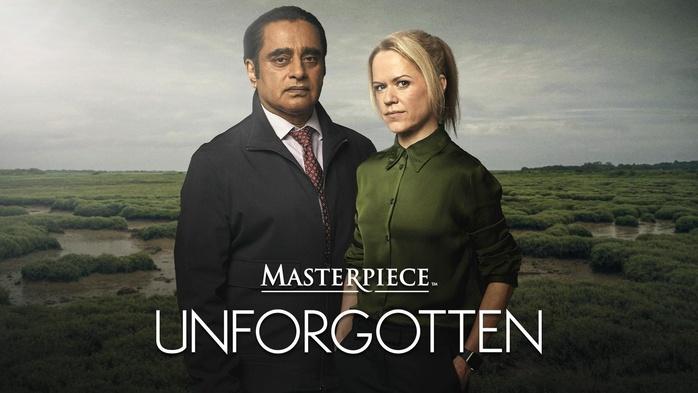



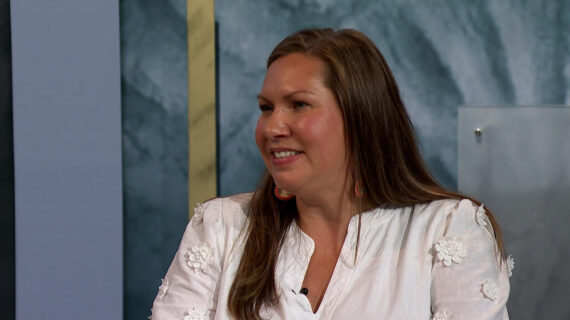
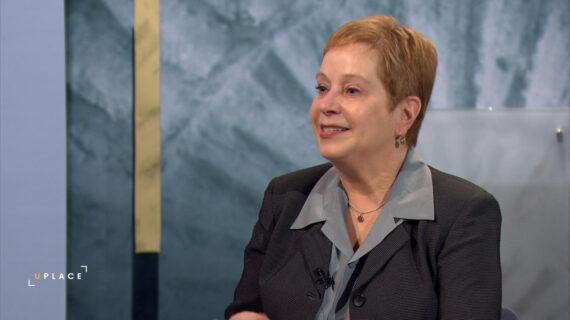

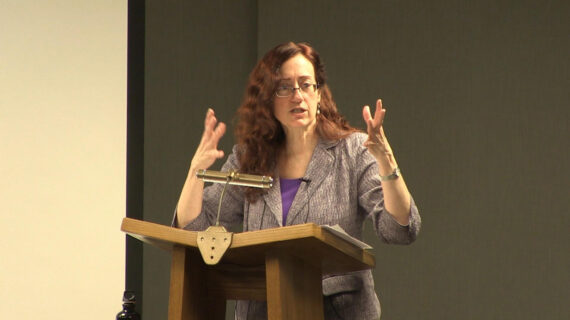
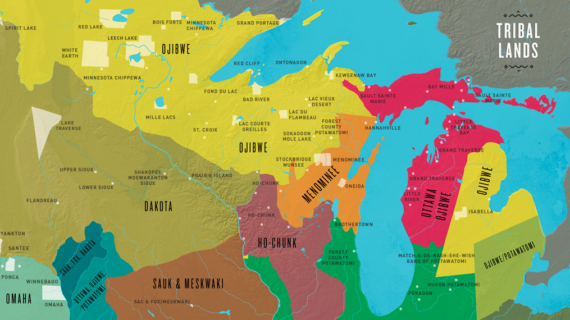
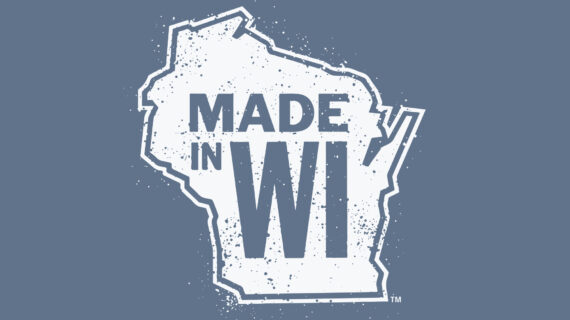

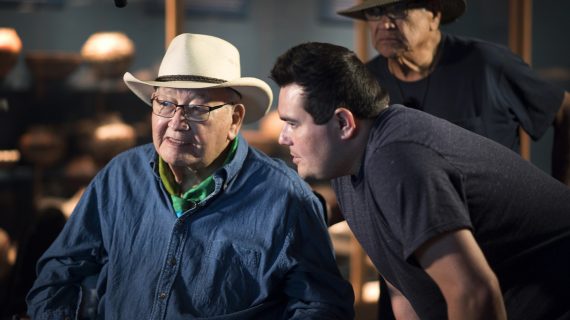



Follow Us